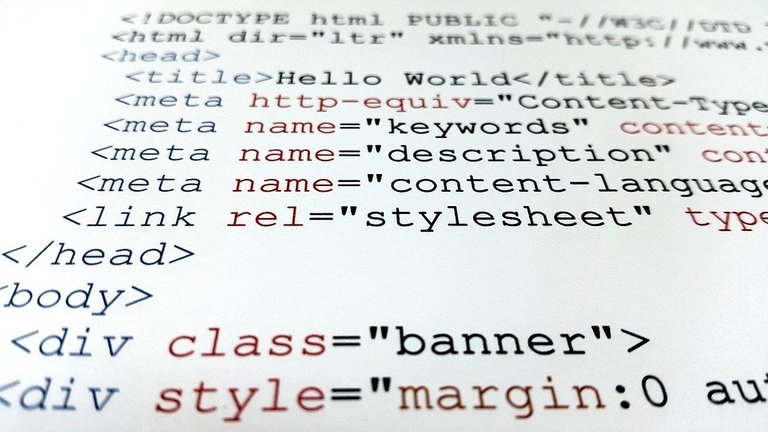Linux and the Cryptoverse, an eternal friendship
Dear #Hiver, the fundamentals that gave rise to the Linux operating system and cryptocurrencies are common, and that union has fostered an inseparable bond. We intend to give you a brief walk through the history and the bases of GNU-Linux and the technologies that support cryptocurrencies.

Transformation of Tux+Leo Source with Laser-eyes and GIMP
I hope you enjoy my eternal crusade in favor of free, open source and Linux technologies.
What are Free and Open Sources Software?
For ordinary users of computer systems, those who limit themselves to using applications in favor of a very specific objective, there is a well-marked confusion, it is thought that talking about free software, open source, and free is the same. In many cases all these elements are present but in others, they are not.

Credidts Tunarus from pixabay.com
We will replay some concepts:
Open Source Software:[1] It is software in which the source code is available to its users, which they can inspect, and in agreement with the defined license modify and improve too. The author makes the source code available to users who would like to view that code, copy it, learn from it, alter it, or share it if the license avail it.
According to the Free Software Foundation FSF[2], Free Software is essentially one that complies with the following 4 freedoms:
- The freedom to run the program as you wish, for any purpose (freedom 0).
- The freedom to study how the program works, and change it so it does your computing as you wish (freedom 1). Access to the source code is a precondition for this.
- The freedom to redistribute copies so you can help others (freedom 2).
- The freedom to distribute copies of your modified versions to others (freedom 3). By doing this you can give the whole community a chance to benefit from your changes. Access to the source code is a precondition for this.
The union of these concepts provides software with special features, as it guarantees transparency, control, security, and support. In addition to serving as a means of teaching algorithms and architecture used, at the same time they can encourage the creation of development communities such as those referred to as the GNU project.
What is Linux?
Essentially Linux is a Free Open Source System Operative Software. All variants or distributions are personifications of a basic GNU-Linux Kernel, more in specific GNU-Linux[3]. Yes, Linux is the kernel, a zero layer that makes all work, and the distributions are the compounds of software that make layers 1 to infinity which allows a user experience. As Richard Stallman says:
Many users do not understand the difference between the kernel, which is Linux, and the whole system, which they also call “Linux.” The ambiguous use of the name doesn't help people understand. These users often think that Linus Torvalds developed the whole operating system in 1991, with a bit of help.
But, what about cryptocurrencies, free open source software, and Linux?

Mine Bitcoin on Linux.... on pinterest.com
The technologies that gave rise to cryptocurrencies are long before them, the idea of the blockchain dates back to 1976 when the possibilities of a distributed digital ledger were debated[4]. Other ideas were needed for the creation of the most legendary cryptocurrency - Bitcoin. P2P data exchange interfaces had to be created, widely used by Torrents, and the genius of a consensus algorithm that brought all the parts together. No one would know about cryptocurrencies today if each and every one of the pieces of software that make up Bitcoin and the entire accrued crypto universe had not been made available as free and open source software.
The first version of Bitcoin compatible with Linux was Bitcoin-Qt version 0.5.0[5], after that comes a huge leap in the creation of nodes that has remained to this day. The vast majority of the validator nodes of all the technologies that support the different variants of cryptocurrencies and smart contract platforms run on Linux.
The different technologies that support the cryptoverse must inevitably be free and open source. One of the basic principles that govern this universe is zero trust, which is reflected not only in the consensus algorithm but also in the base software code in charge of the validator nodes. Each user with sufficient knowledge can read, study, report security flaws and propose changes to the community, which works as an additional consensus mechanism to the protocol. Just to give two examples:
- Litecoin was a fork of Bitcoin in which the hashing algorithm, the time between blocks, and their size were changed. This is a sample of how the philosophy of open source is put into practice.
- A bug in the source code of the MonoX exchange, where a token was allowed to be exchanged with itself, allowed the theft of 31 million dollars. This happened despite receiving three certified security audits. After this postmortem, the error was corrected and measures were put in place to mitigate the impact of the theft, more information here. Here the need for the code to be publicly audited is evident, the fact that an expert spends time analyzing a code does not guarantee its security, those of us who have developed software know what hunting for a lost minus sign can mean.
With the development of docker containers the development and deployment of crypto solutions are very accelerated, the vast majority of these containers have basic Linux distributions, which allow total and reliable management of all the components that are part of the computer solution. Not only are the costs of accessing free technologies cheaper, but the support and error correction is very dynamic and agile, especially if it is hosted in version control systems such as GitHub.
Final words
The data that we have briefly shown you can be summarized in:
- For both crypto and Linux technologies, the fact that their development is on free and open-source software is an imperative necessity, especially for the security they confer.
- Each of us as users has the freedom to check that the software we use works correctly and safely, and if the knowledge reaches us also improve it.
- It is no coincidence that Linux is the operating system on which more internet services operate, the total control it confers on its managers is a necessary value.
- The friendship and symbiosis between Linux and crypto technologies will continue to grow. In fact, there are even specific distributions for common users and containers that deploy a Bitcoin node or others in very few steps.

Eternal friendship, taken from the source
And remember:
Thank you for reading us, we hope we have added something to your knowledge or reaffirmed the one you have.
Cheers!
Posted Using LeoFinance Beta
Posted Using LeoFinance Beta
Congratulations @tuxtify! You have completed the following achievement on the Hive blockchain and have been rewarded with new badge(s):
Your next target is to reach 50 comments.
You can view your badges on your board and compare yourself to others in the Ranking
If you no longer want to receive notifications, reply to this comment with the word
STOPTo support your work, I also upvoted your post!
Check out the last post from @hivebuzz:
Support the HiveBuzz project. Vote for our proposal!
https://twitter.com/ENCerty/status/1569745731011084290
https://twitter.com/RuelChavez5/status/1570007404473090048
The rewards earned on this comment will go directly to the people( @ertytux, @rzc24-nftbbg ) sharing the post on Twitter as long as they are registered with @poshtoken. Sign up at https://hiveposh.com.
My dear friend, I see that you are catching up with Hive, I knew that you have very good things to contribute. Great
Hermano, no hay necesidad de que me escribas en inglés, lo hago porque es lengua franca.
Pues si, he descubierto muy buenas cosas en #Hive, gracias por tu insistencia, ojalá pudiera dedicarle más tiempo. Un abrazo a lo cubano.
Posted Using LeoFinance Beta
Thanks for your contribution to the STEMsocial community. Feel free to join us on discord to get to know the rest of us!
Please consider delegating to the @stemsocial account (85% of the curation rewards are returned).
You may also include @stemsocial as a beneficiary of the rewards of this post to get a stronger support.
Glad to learn from someone who knows his stuff. 😎
I !love it. I didn't know that such types of technical or technological freedoms exist.
A zero layer? Pardon my naivety. How does it relate to the idea that the community is layer 0 and that the Hive blockchain is layer 1? I suspect that I am confusing things and trying to connect things that are not related.
This one is heavy:
It takes time to digest them.
Wow! That's alarming!
And what follows are comforting:
Grateful for the information you shared. 😎
@rzc24-nftbbg(1/1) gave you LUV. tools | wallet | discord | community | <>< daily
tools | wallet | discord | community | <>< daily
HiveBuzz.me NFT for Peace
Dear @rzc24-nftbbg, about your comment:
Think that the software that makes the blockchain work is layer 1, then the operating system that allows it to work is layer zero.
Have you had the need or the audacity to copy pirated software, movies, series, etc? Well, that's why BitTorrent was invented, because it works as a decentralized P2P network, it is precisely this technology that allowed to make replicas of the blocks that make up the bitcoin blockchain and the others that came later. Sometimes giving details of technology is heavy, and many things are omitted.
I appreciate your comments, I am very glad that some useful information came to you. See you at #Hive!!!!
Posted Using LeoFinance Beta
Grateful for the wealth of information you are sharing especially for a guy like me who is an alien when it comes to cutting-edge technology.
Your reply helps clarify things.
!PIZZA
!CTP
PIZZA Holders sent $PIZZA tips in this post's comments:
@rzc24-nftbbg(1/5) tipped @tuxtify (x1)
Join us in Discord!